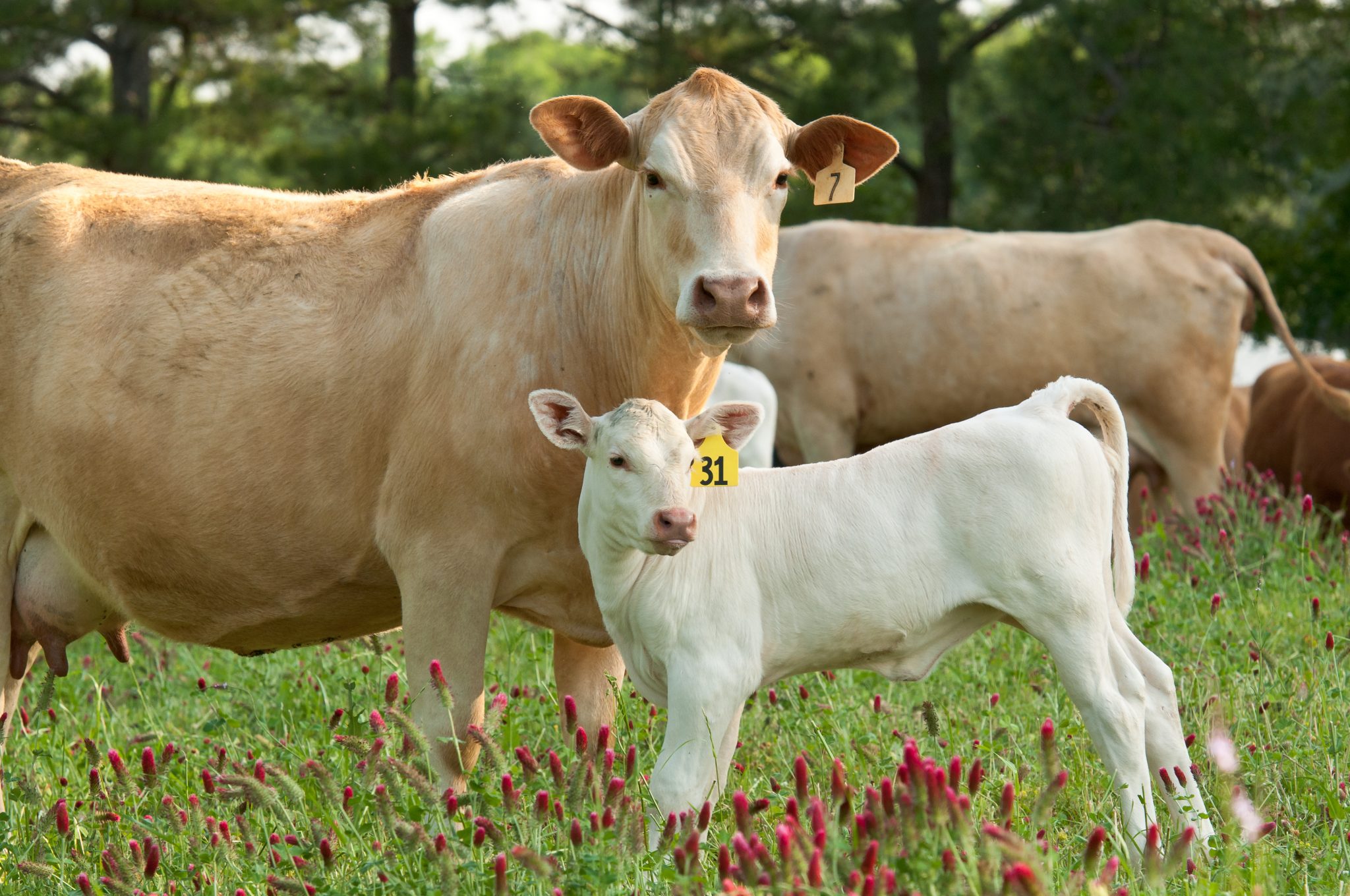Beef

Anaplasmosis is a disease characterized by progressive anemia and caused by the rickettsial organism Anaplasma marginale. The disease is present in many parts of the United States, including Alabama, and causes significant economic losses to the beef and dairy industries. Veterinarians in some parts of the United States are reporting more cases of anaplasmosis in recent years, perhaps as a result of increased cattle movement due to drought and other natural disasters.
Transmission and Incubation
Anaplasma marginale is transmitted from carrier to susceptible cattle by biting flies and ticks (arthropod vector transmission) or via contaminated needles, tattoo instruments, or dehorning and castration equipment (iatrogenic transmission). Ticks are more likely to spread the disease from one herd to another, while horse flies usually require closer proximity of infected and susceptible animals. Stable flies can also transmit the disease but probably not as effectively as horse flies. Iatrogenic spread is sometimes a more efficient route of transmission within a herd than the arthropod vectors. According to one report, a needle used on an infected animal leads to a 60 percent chance of the next animal being infected if the same needle is used.
The incubation period (time from infection to clinical disease) can be from 1 to 8 weeks, depending on the infective dose. In natural infections it is usually 3 to 5 weeks. The organism replicates in red blood cells, which are then removed from circulation, resulting in a progressive anemia. Animals that survive the anemia usually become chronic carriers of A. marginale. Transplacental transmission is reported to occur and could play a role in the maintenance of the disease within herds. Calves that are infected in utero rarely show clinical signs but become carriers.
The severity of disease is age-related and possibly breed-related. Calves less than 1 year of age usually only show mild signs or remain asymptomatic; cattle up to 2 years of age have acute but rarely fatal disease; and cattle greater than 2 years of age are most likely to have severe and potentially fatal disease. Bos taurus cattle appear to be more likely to develop severe disease than Bos indicus cattle. The reasons for the age and breed susceptibility differences are not known.
Clinical Signs
Peracute, acute, chronic and mild forms of anaplasmosis occur. Acute anaplasmosis is most common and usually occurs in summer and fall during peak vector season. If outbreaks occur at other times, iatrogenic transmission should be suspected. Fever, anorexia, rapid loss of body condition, severe decrease in milk production, pale and icteric (yellow) mucous membranes, increased heart and respiratory rates, muscle weakness, and depression are common. Aggression from cerebral hypoxia (low oxygen levels in the brain) is also common, especially in beef cattle. Abortions may occur in females, and temporary infertility may occur in males.
With peracute anaplasmosis, death occurs within hours of the onset of clinical signs, whereas chronic disease occurs in severely affected animals that do not die. Recovery may take weeks to months, during which time production losses can be significant (decreased calf weaning weights, infertility, etc.). In mild cases, abortion and decreased milk production may be the only problems, which may go unnoticed.
Diagnosis
Acute cases of anaplasmosis are diagnosed microscopically by finding A. marginale bodies at the periphery of red blood cells. However, once the acute stage is advanced, it may be difficult to find the organism. Therefore, late clinical disease or the chronic carrier state has to be diagnosed with serologic tests. In the past, the rapid card agglutination and compliment fixation tests were most commonly used. A new competitive ELISA (cELISA) appears to have much better sensitivity. However, the sensitivity of the serologic tests depends on the stage of infection, and early in the incubation phase these tests may be negative.
Conclusion
In a noninfected herd, the goal is to prevent anaplasmosis. Therefore, have your veterinarian screen herd additions with the cELISA, or purchase animals from test-negative herds. The cELISA is available through your veterinarian at the Alabama Department of Agriculture Veterinary Diagnostic Laboratory. However, because of the potential for false negatives on the cELISA during the incubation phase, the disease could still sneak into your herd. If you suspect anaplasmosis in your herd, contact your veterinarian for a thorough investigation and advice regarding elimination and future prevention.
Download a PDF of Bovine Anaplasmosis, ANR-0777.

